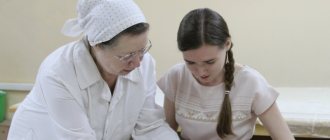Ceramic workshop invites artists and sculptors
The Nikolo-Solbinsky Monastery has its own ceramic workshop. Here they produce dishes, souvenirs, and figurines using slip casting technology. This technology originated in the 18th century in Europe, and then came to Russia. The ceramic workshop consists of three workshops. In order to make one product, you need at least two weeks and five workers. “To make a cup, the artist draws a sketch on paper, then grinds a complete blank from plaster on a special machine, from which he removes the plaster mold. Liquid clay is poured into it and remains there until the gypsum absorbs it. Each cast product is prefabricated. We don’t glue, but rather attach, so if you deform the shape even a little, for example, when attaching a handle, the clay will remember these deformations and, after firing in the oven, will bend again,” says nun Tamara. After the products have been poured and they have dried, the setting process begins. If the framer removes the seams unevenly or smudges the edges, the product will remain deformed. When the mandrel is finished, the product is placed in a drying cabinet.“When the product is washed and set, it goes to the kiln, where the first firing is done. Then the product is covered with white enamel,” explains the sister.
The defect rate with this technology is very low. Yes, and it occurs most often due to the human factor or technical failure, but the latter is extremely rare. If you fill the product carelessly, carelessly, cracks will form. If you prepare the stove incorrectly, the product may stick or stick together. For the abbess of the monastery, the key task was to create her own style. That is why all products are made in red-brown tones with a pattern. The sketches are developed by the creative team. The monastery is constantly in need of artists and sculptors with education. Not only nuns, but also ordinary specialists work in the ceramic workshop.
“Of course, lay people also work for us. We teach ourselves how to draw. But I won’t hide that we are very interested in artists and sculptors. If you want to work with us, you can simply contact the monastery or specifically the ceramic workshop. We have very good conditions, and the very specifics of work in the monastery are very different from production,” explains Sister Tamara.
According to the nuns themselves, at first no one took them seriously. Ceramic art, like any other, needs to be studied in a specialized institution - this is what the majority thinks. “We once went to production and they told us: “Yes, you can, because you have to learn this.” But we can do it, it’s just that different laws apply here. People need to make this clear. The monastics have a different task. A German once came to us and said: “Who gave you the initial capital?” I said that no one gave it to us. That is, the way of thinking is already such that a person cannot do anything without initial capital,” said Sister Tamara. It turned out that the monastery lives entirely on donations. “Often, out of obedience, you have to do work that you have never encountered before. But we pray and ask the Lord for admonition. And the Lord helps,” adds mother Eupraxia. Ceramic production has existed in the Nikolo-Solbinsky Monastery since 2011, but only in 2015 did it develop its own style. Most recently, the monastery took part in the Russian ceramics festival with its products and took first place there.











